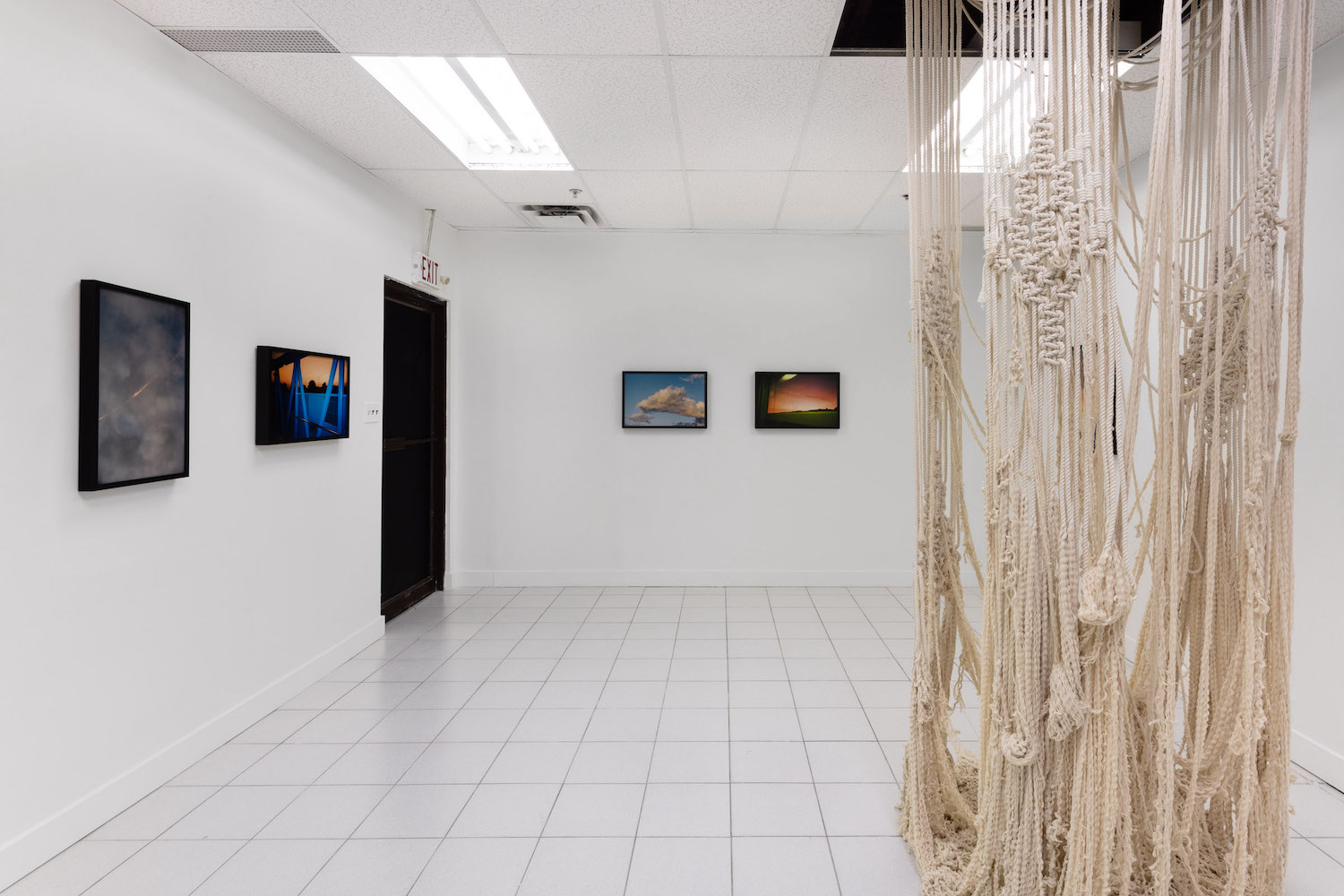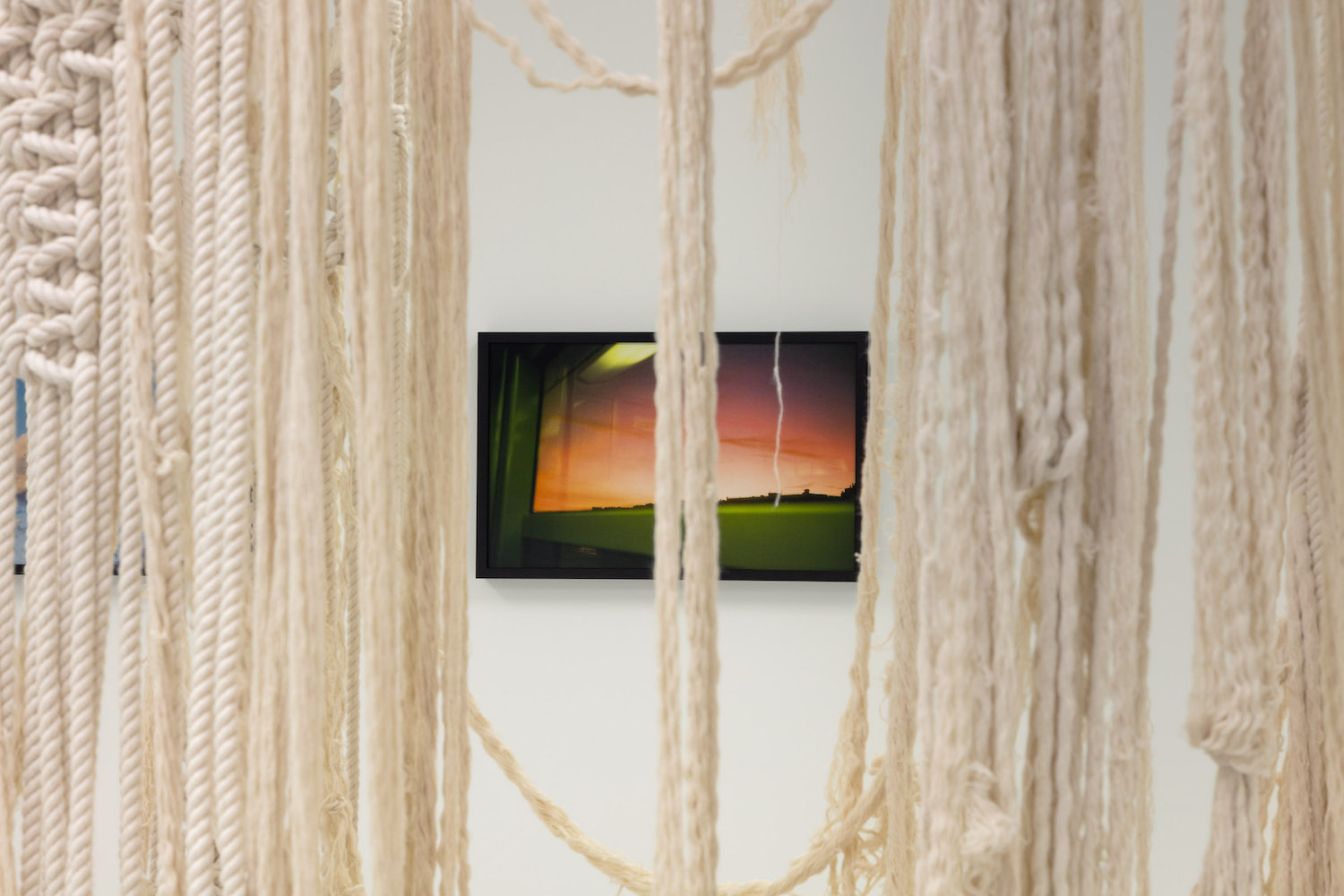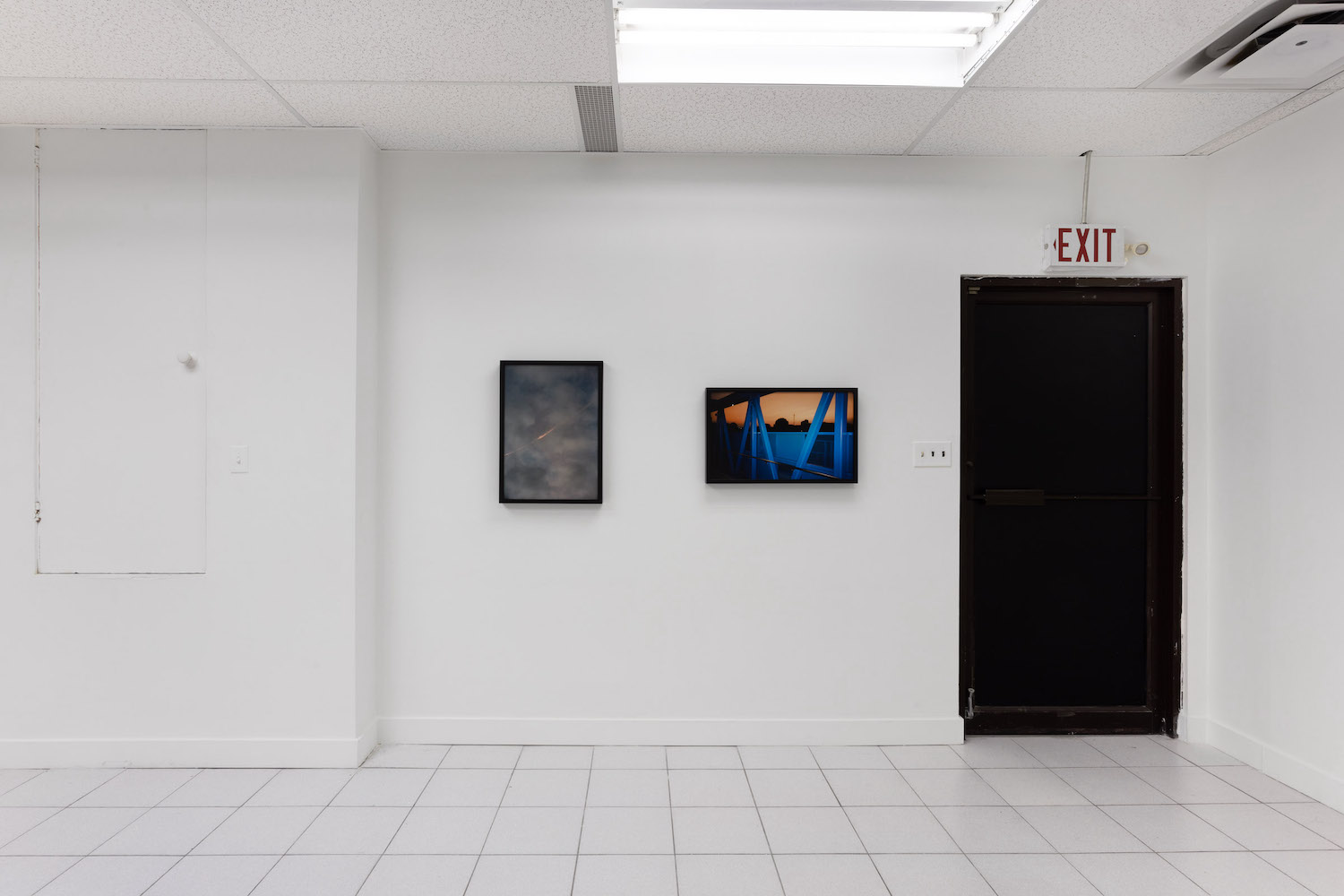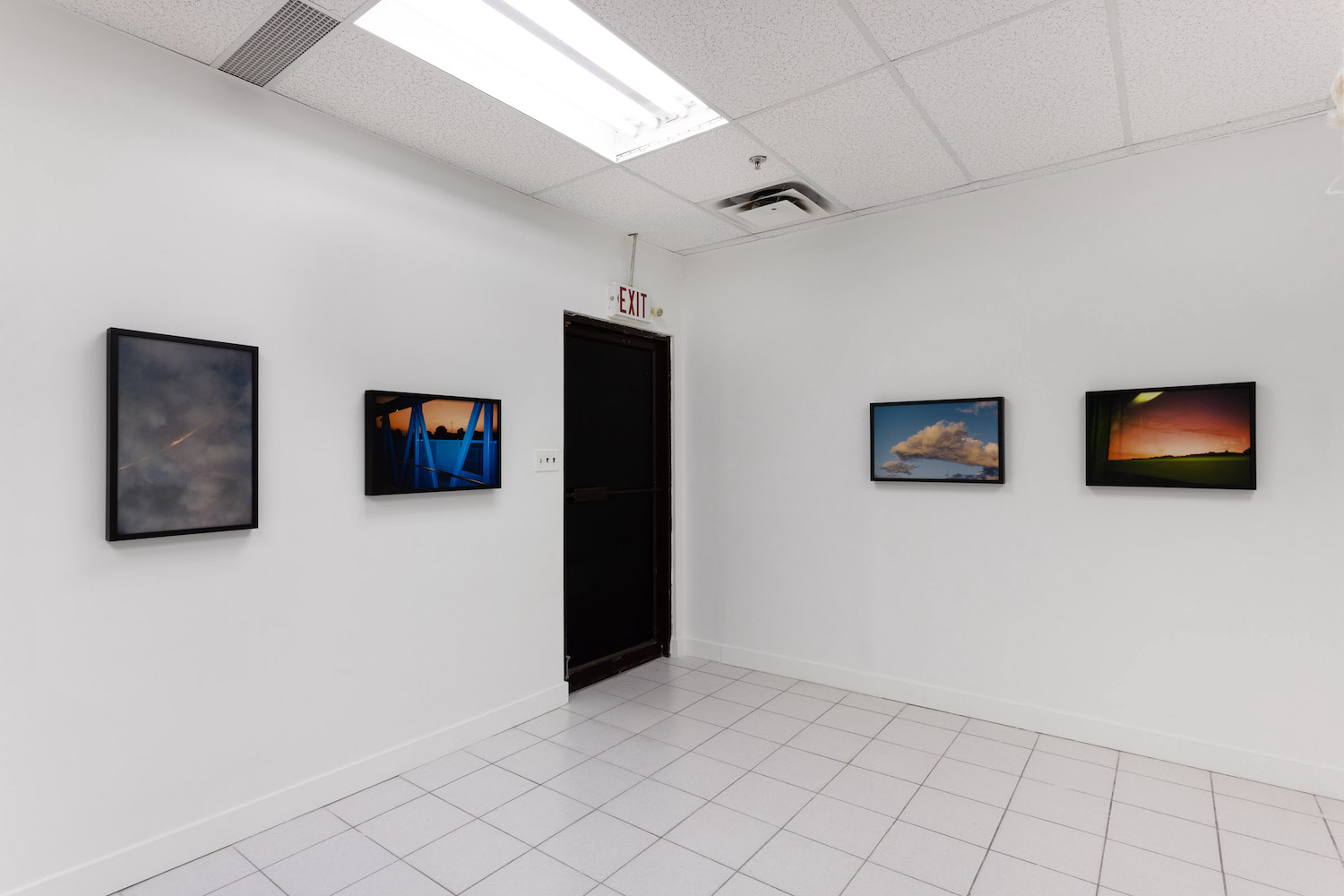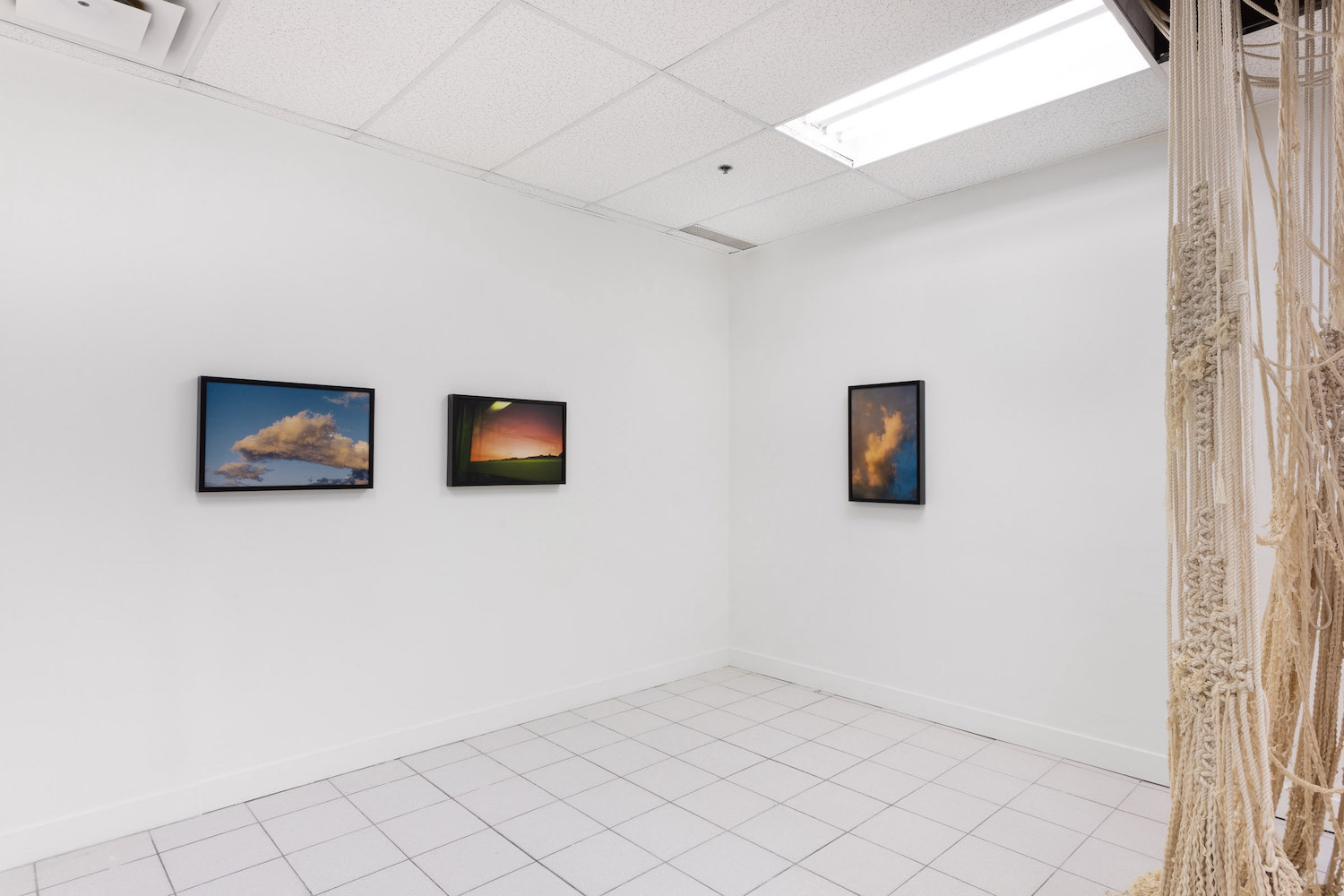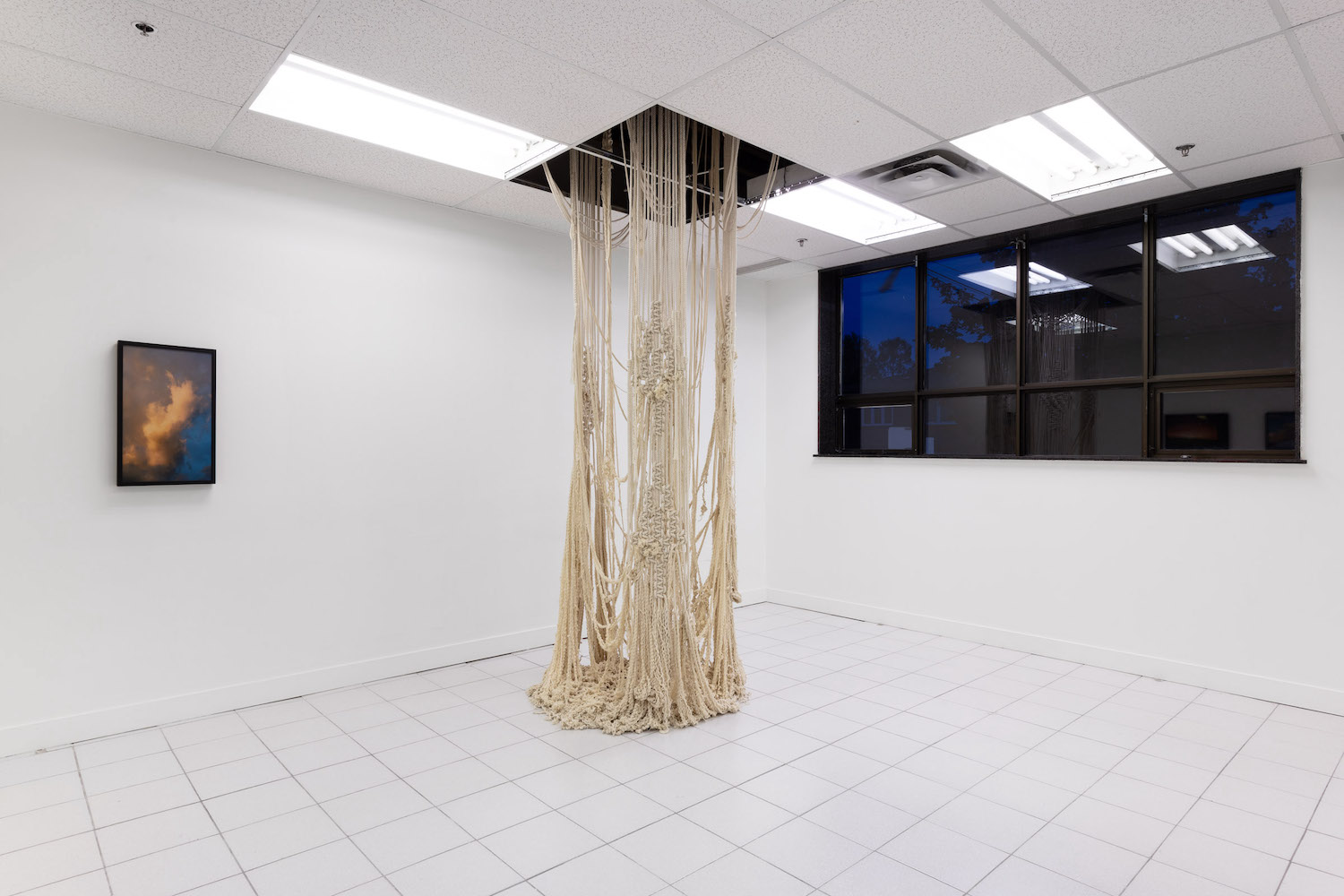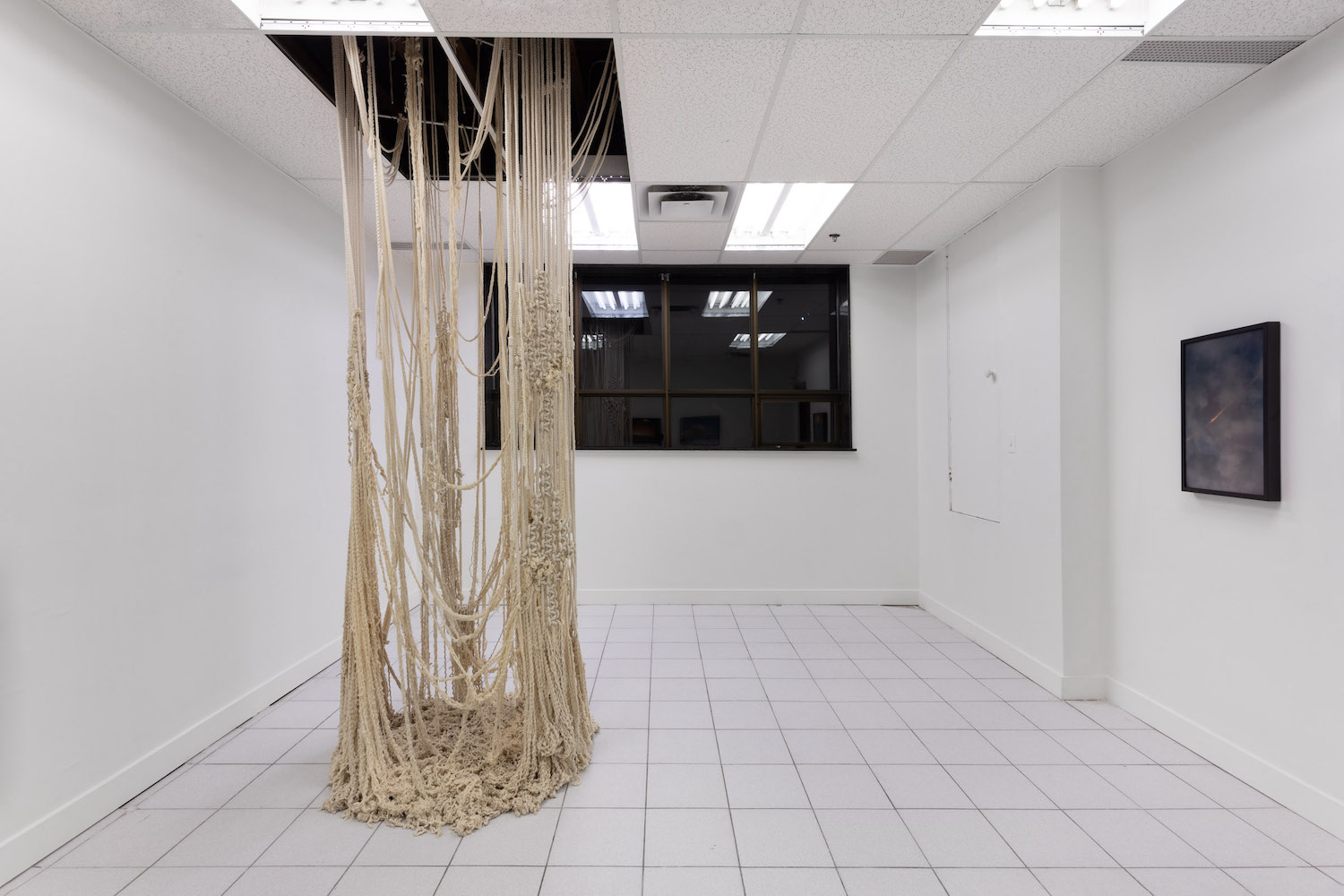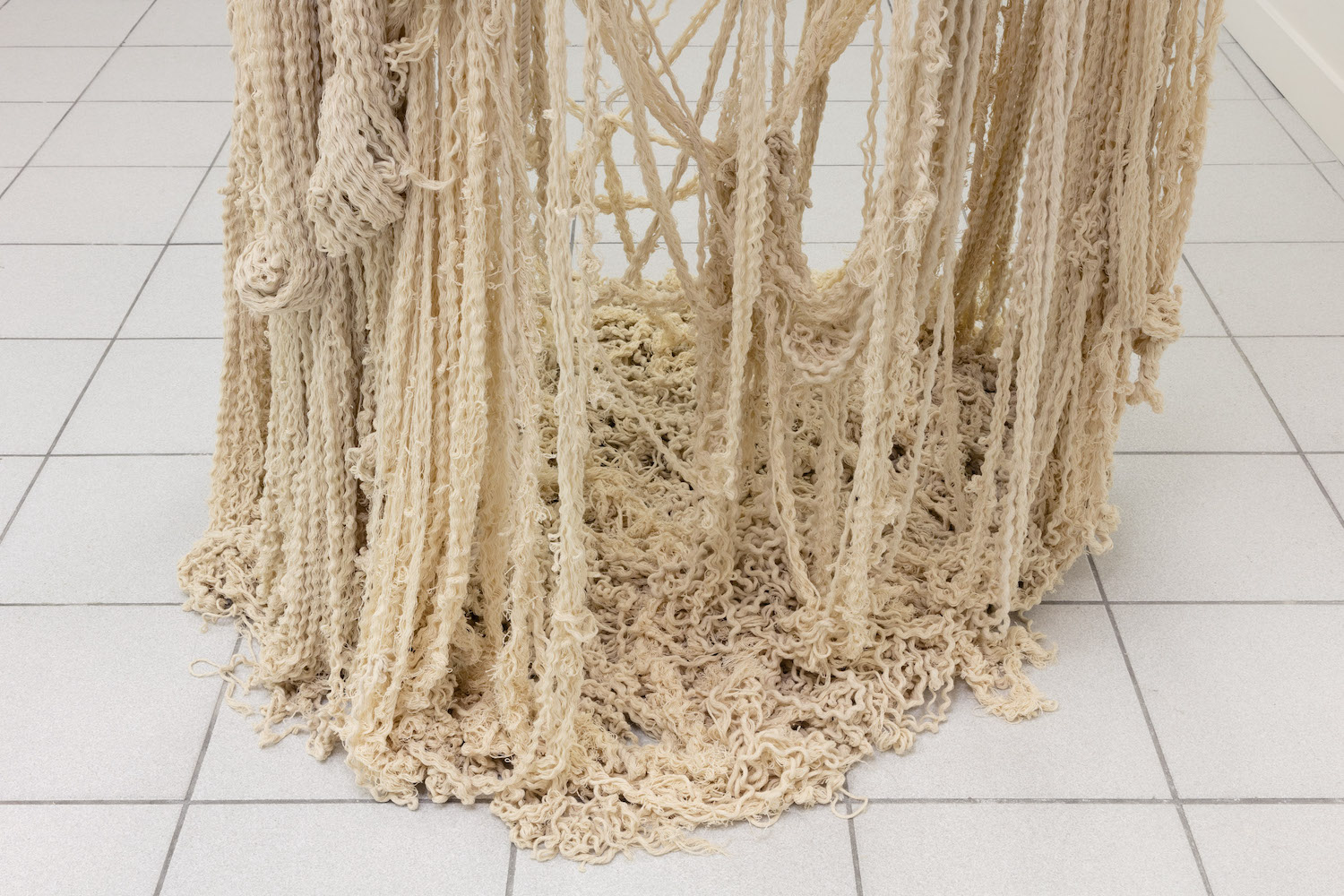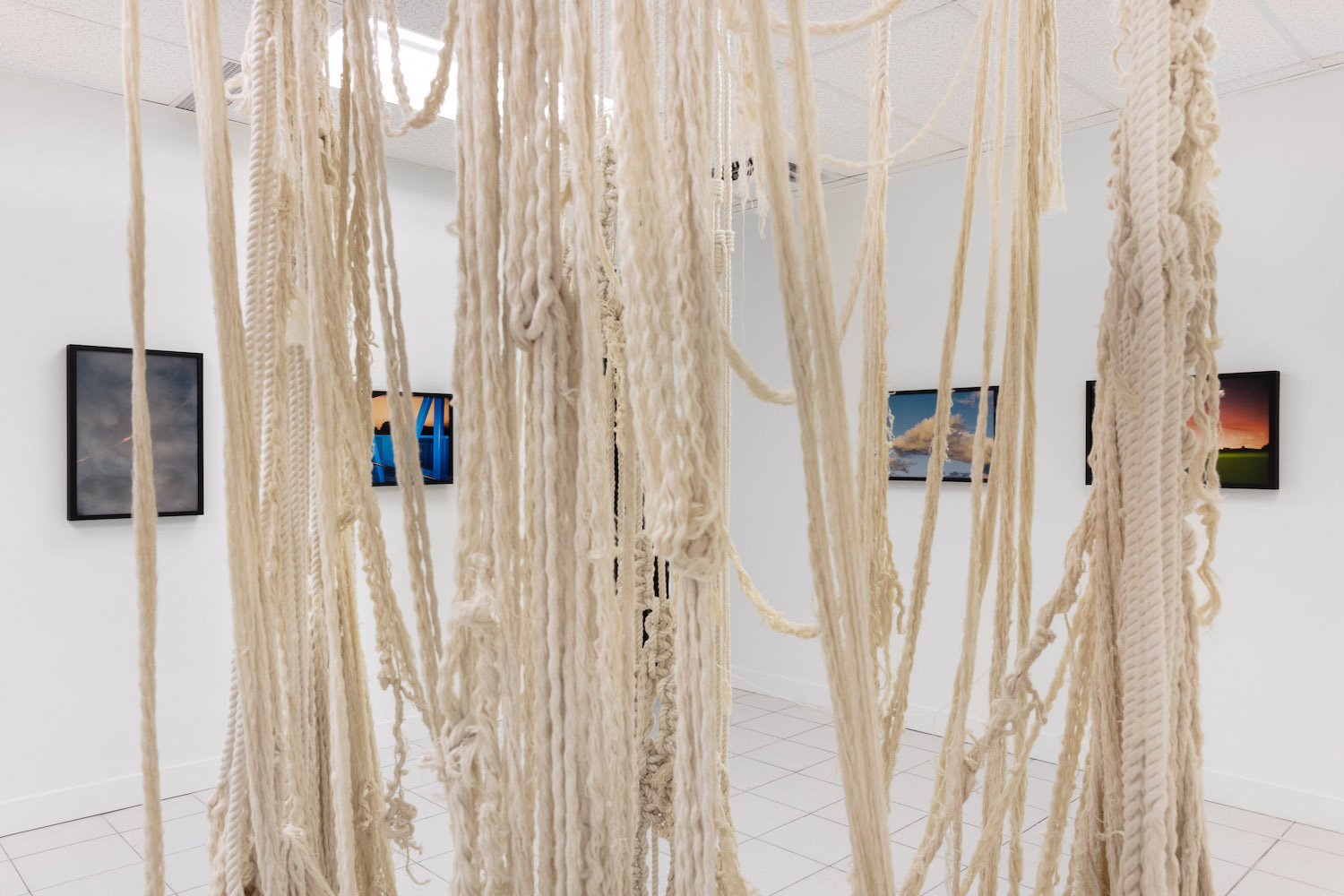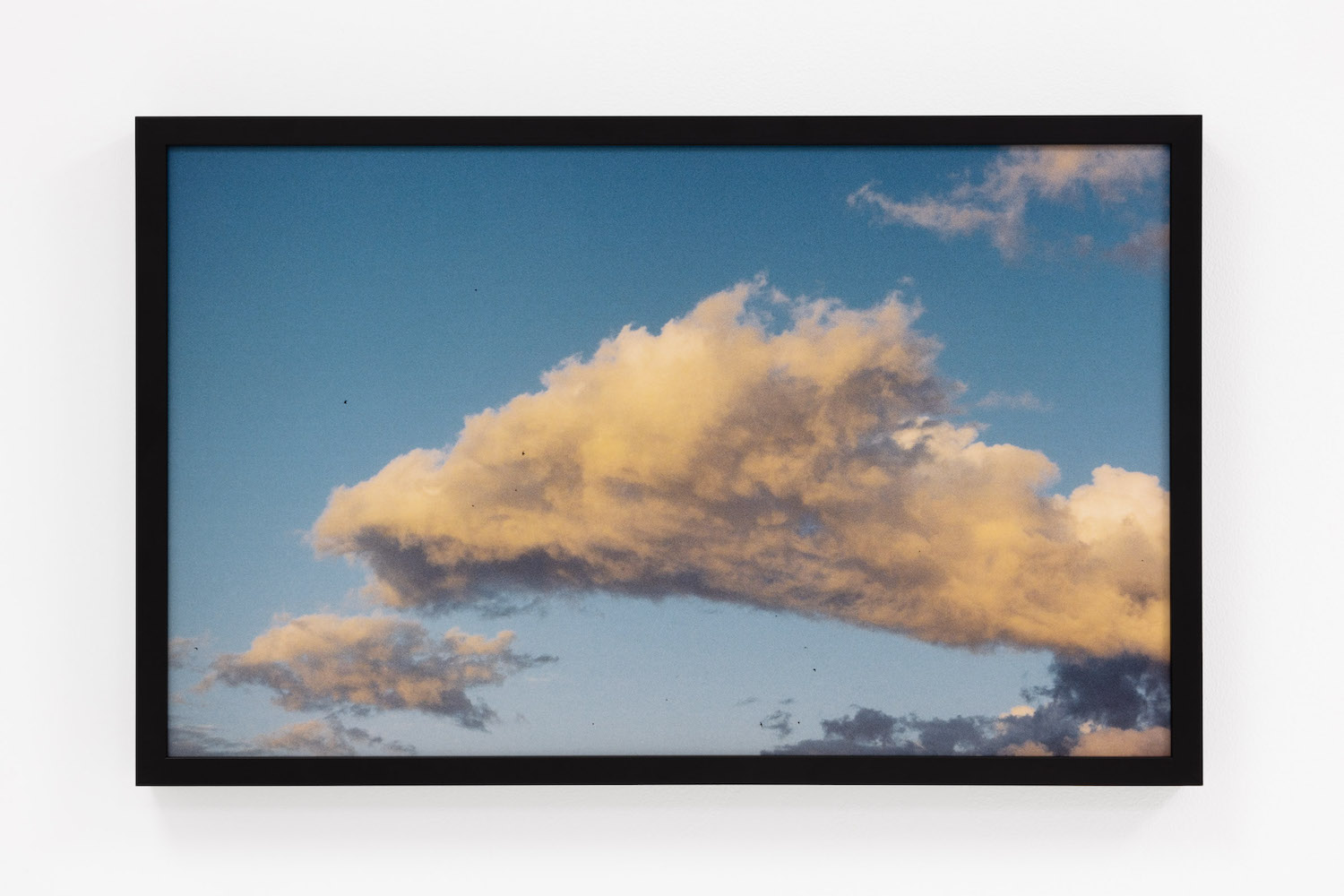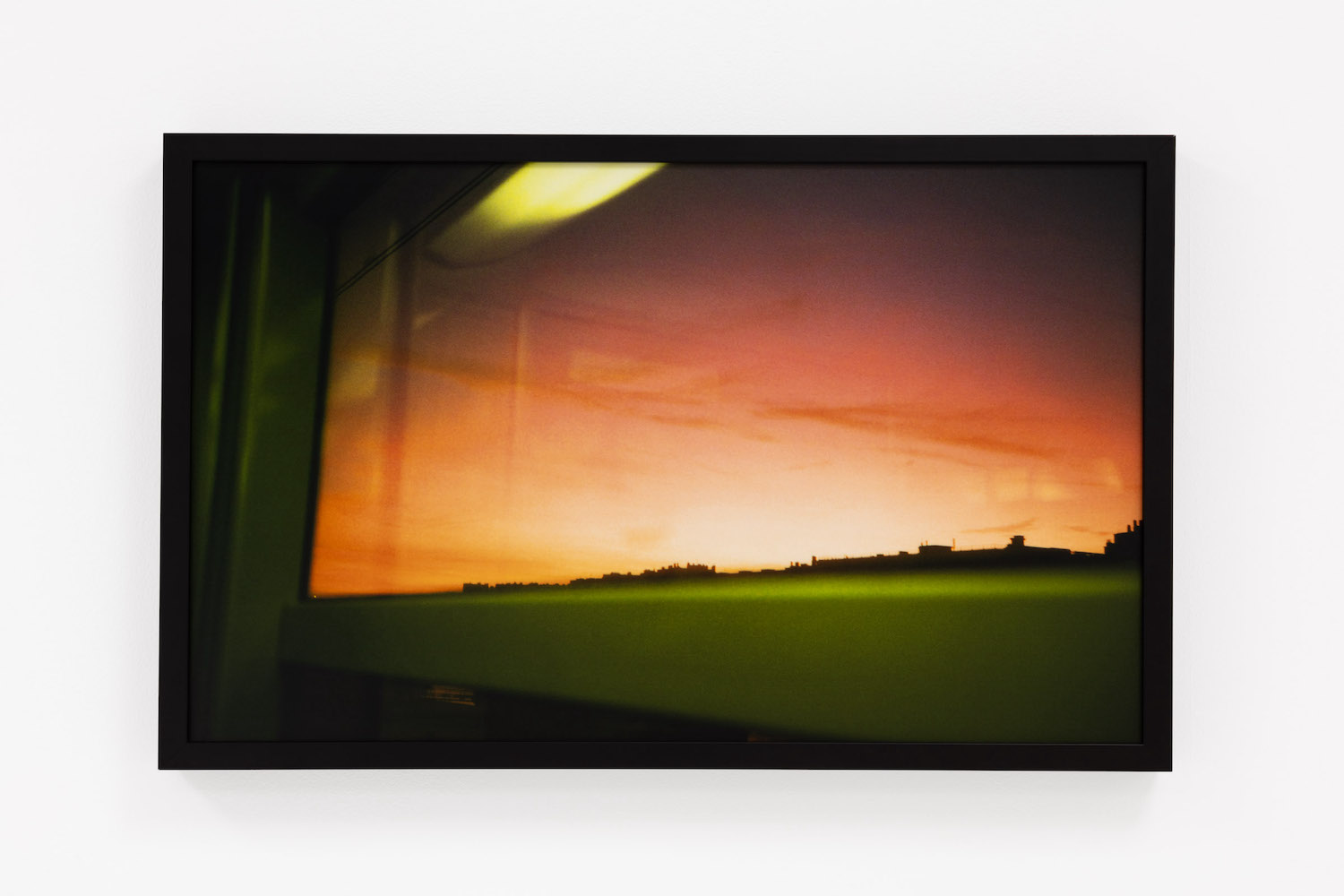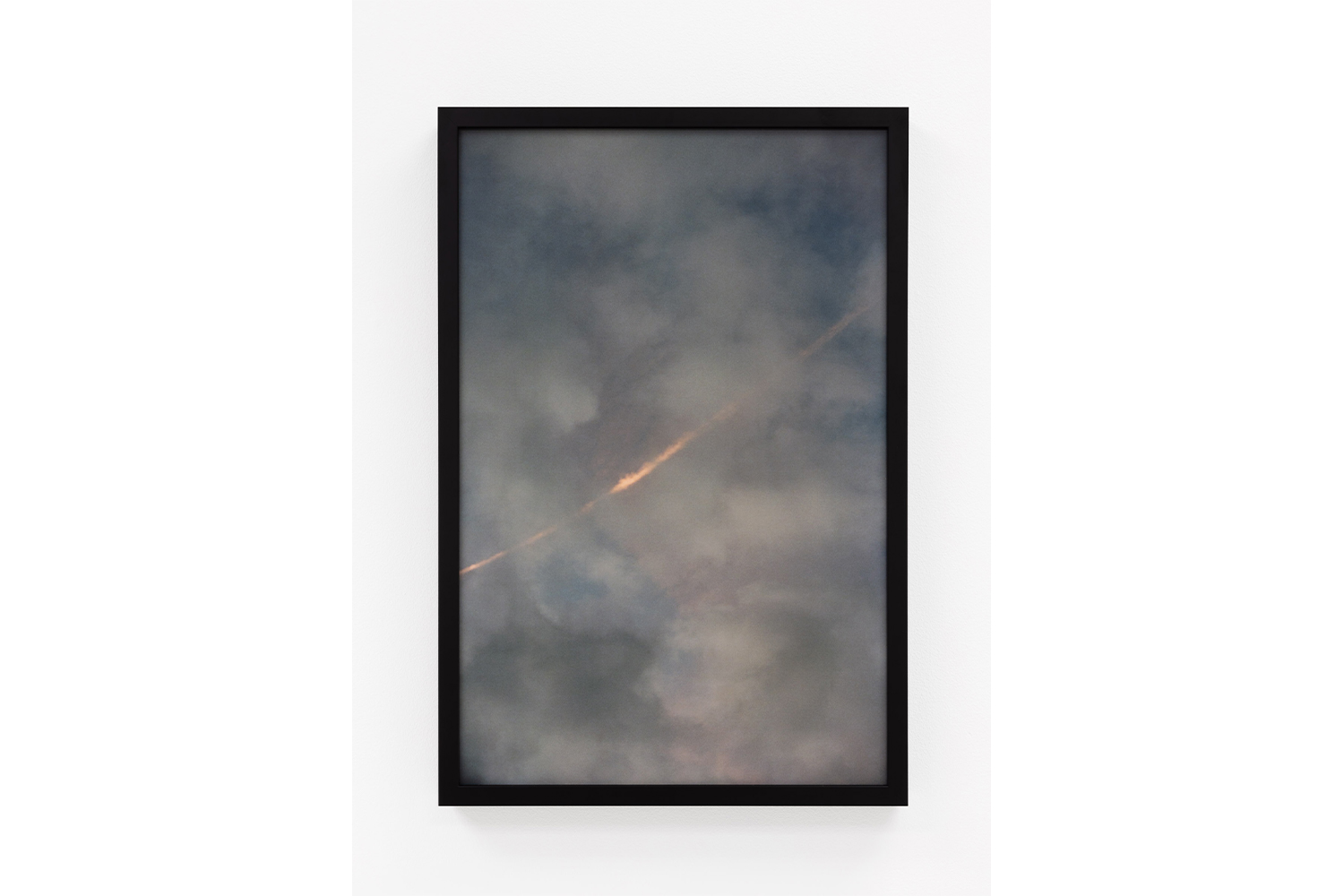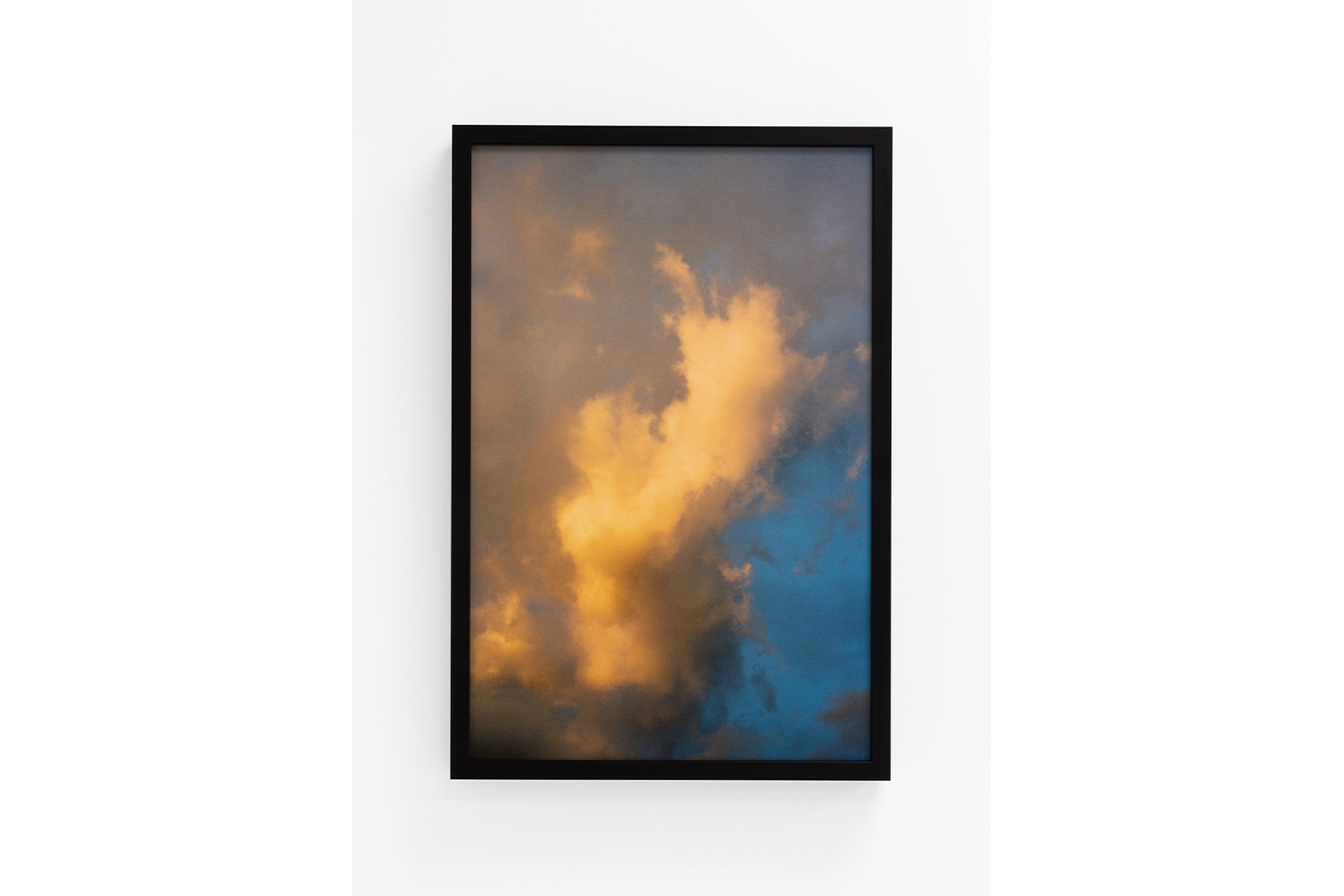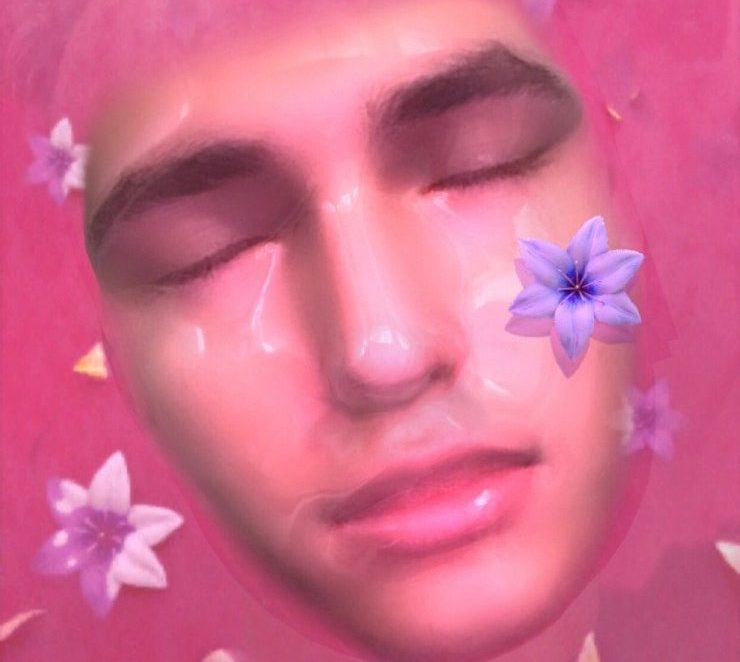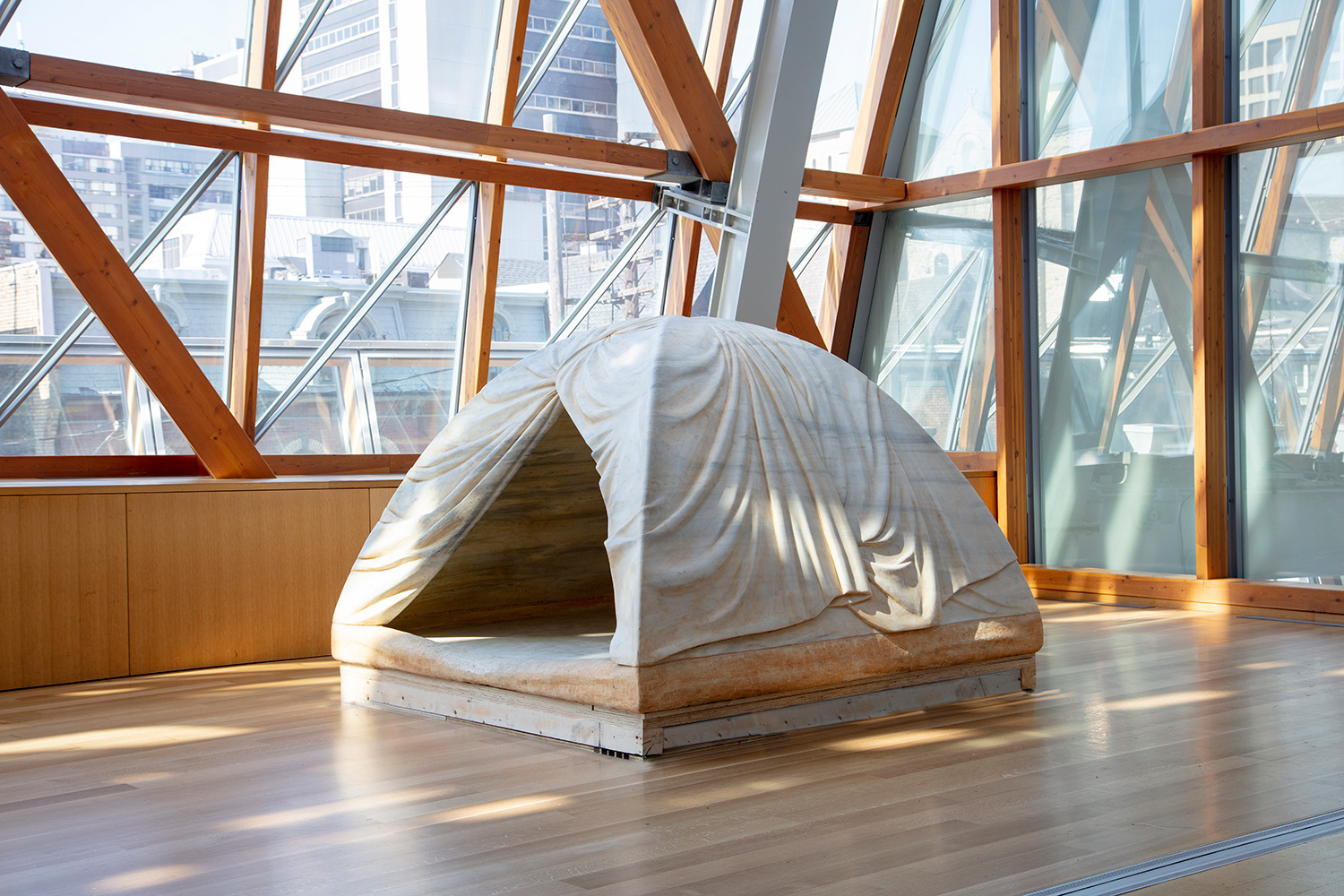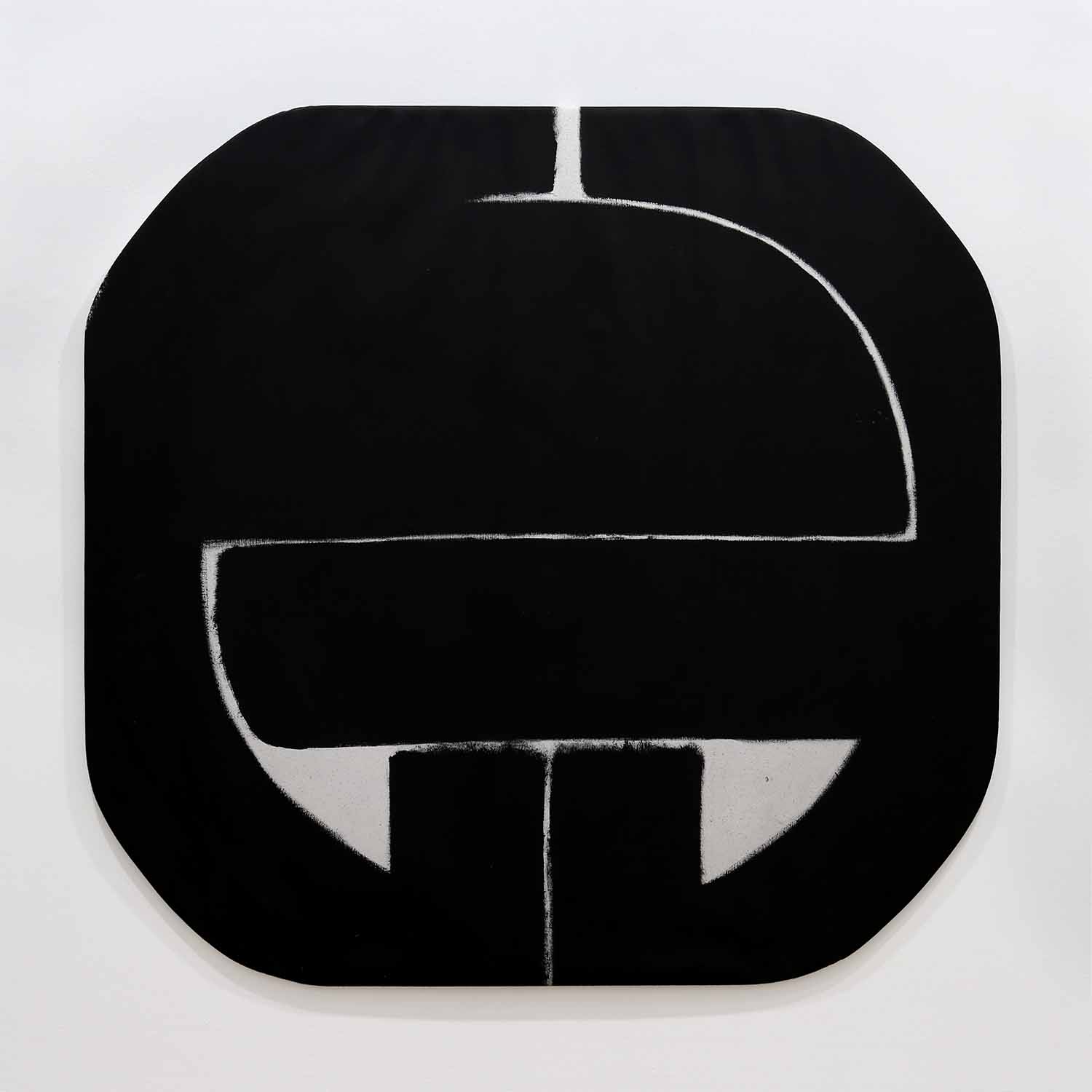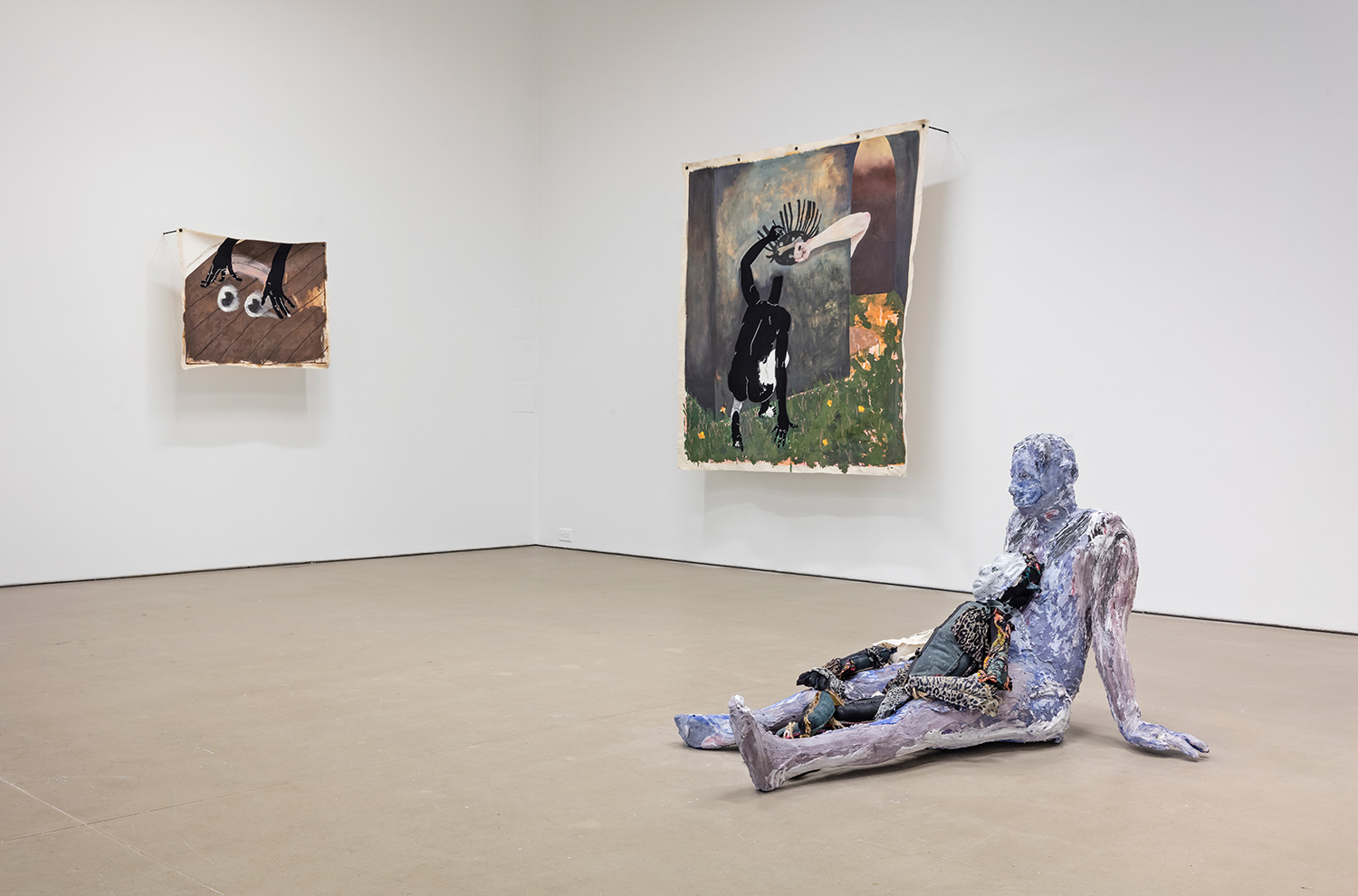In the summer moments closest to the solstice, I think nothing of the sunlight stretching on. During the deepest recesses of winter, I am resigned to the extended dark hours and my daily routine responds accordingly. Here in Toronto, it is in the days and weeks approaching the equinoxes in the spring and autumn that the transitions of light and temperature that determine the necessities of day-to-day life are the most marked. The material conditions of Safouane Ben Slama’s photographs and Samar Hejazi’s sculpture in this two-person exhibition are intentionally subject to this shift of seasons and are palpable as soon as I enter the space. It is late afternoon and the waning sunlight pouring in from the four connected south-facing windowpanes is bolstered by the even glow of fluorescent tubes embedded into the industrial drop ceiling.
Interrupting this standardized grid overhead are the spaces left by two absent tiles. In their place cascades a macramé structure, intertwined and intricate. The clusters of rope that comprise Hejazi’s Reifications (2021), a large-scale sculpture nearly three meters long, exceed the limit of the artificial ceiling. A series of long wooden dowels hung by hooks anchored directly into the rafters above mark her process of uniformly tying off each cord before starting the more elaborate series of knots that cluster into patterns. While some symmetry does appear on multiple sides of the macramé, there is as much difference as there is repetition. All over the sculpture, ropes cross one another at different heights, and intensive fraying throughout results in an accumulation upon the floor where the length of the material comes to rest, nest-like. Partially composed and partially improvised, this work was produced in part on site, suspended as it accumulated. Taking on but one possible configuration here, the hanging system assembled by Hejazi conjures the curing of allium for the coldest months ahead.
Ben Slama’s photographs documenting the transition to sunset are taken from his series “La Dernière Heure,” and yet the individual titles of the five framed c-prints that form a line across three of the gallery’s walls pull at the discontinuity of separate places and the indeterminate geographical and temporal spaces between each of them. The works ciel d’Alger(2018), 21h40 (2017), and Sans titre (2017), located at the beginning, middle, and end of the group, contain only airspace, the color of match flare either coating the clouds or cutting across the sky.
In rer c (2017) and Clamart (2017), the colors captured present a harder study in contrasts against the intense orange collecting in the atmosphere, while simultaneously tethering the scope of the series toward landscape. The former, titled for one of the five Réseau Express Régional rail lines serving Paris and its suburbs, offers a view from a compartment window, the lurid green of the frame emitting from the tube light reflected onto the glass. In the latter, a bright blue bridge cuts diagonally across the horizon, and as viewers we are ostensibly in one of the city’s suburbs again.
The dependence upon artificial illumination over the diminishing daylight here serves to remind me of its presence that will only grow in the coming weeks and months and I think about the imminent changes to hues and shadows in my own home as I prepare to exit the exhibition. The ends of the ropes accumulating onto the floor appear darker than those above, and the frames of the photos seem to be a deep blue. As I leave, the fluorescent tubes are extinguished and in the glow of the last light I see something else entirely.

